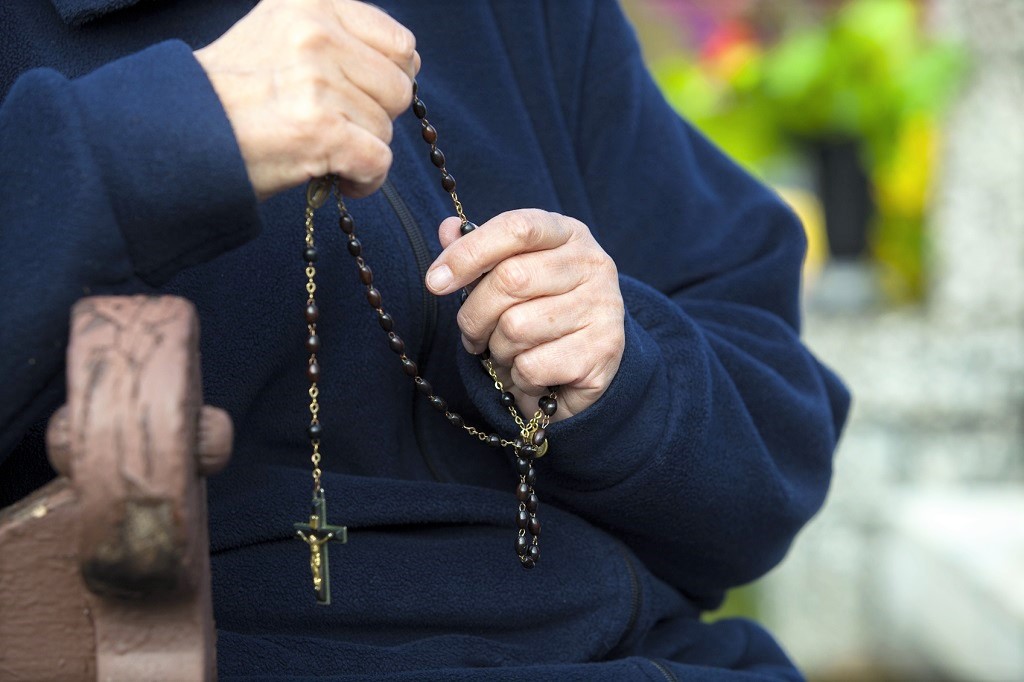Continuing our discussion of the Rosary, today we ponder the Sorrowful Mysteries. These are typically prayed on Tuesdays and Fridays. Let us begin with this reflection from Romano Guardini’s The Rosary of Our Lady:
The essence of the Rosary is a steady incitement to holy sympathy. If a person becomes very important to us, we are happy to meet someone who is attached to him. We see his image mirrored in another life and we see it anew. Our eyes meet two eyes that also love and see. Those eyes add their range of vision to ours, and our gaze may now go beyond the narrowness of our own ego and embrace the beloved being, previously seen only from one side. The joys that the other person experienced, and also the pains he suffered, become so many strings whose vibrations draw from our heart new notes, new understanding, and new responses.
It is intrinsic in the virtue of sympathy that the other person puts his life at our disposal, which enables us to see and to love not only with our own senses but also with his. Something of this sort, only on a higher plane, happens with the Rosary.
This perhaps explains the Sorrowful Mysteries best of all: to see the suffering of Christ through the eyes of his mother.
The Sorrowful Mysteries are:
- The Agony in the Garden: Christ contemplates his suffering and death, along with Judas’ betrayal. His suffering causes Him to cry out to His Father: “Let this cup pass over Me.” In the end, He assents to His Father’s will.
- The Scourging at the Pillar: After being taken to the High Priest, Jesus is handed over to Pilate. Pilate sentences Him to be scourged, and to death.
- The Crowning of Thorns: In a cruel mockery of Christ’s true priesthood, the Roman guards force a crown of thorns on Jesus’ head. He is spat upon, while the soldiers cry out with derision, “Hail, King of the Jews.”
- Jesus Carries His Cross: After being whipped and beaten, Jesus must now carry His own cross, the instrument of His death. The cross is made all the heavier by our sins, which He gladly bears.
- Jesus is Crucified: “It is finished.” With his mother, Mary Magdalen, and John, the beloved Apostle looking on, Jesus is nailed to the cross and dies a painful death. His affliction is our salvation.
Ecce homo: the meaning, origin and fulfilment of man is to be found in Christ, the God who humbles himself out of love “even unto death, death on a cross” (Phil 2:8). The sorrowful mysteries help the believer to relive the death of Jesus, to stand at the foot of the Cross beside Mary, to enter with her into the depths of God’s love for man and to experience all its life-giving power.
In praying and pondering over Christ’s suffering, we come to realize our own sinfulness and the misery it causes. The fact that Christ died for our salvation is truly a mystery, but one for which we must feel both sorrow and joy. It is a mystery that we can pray over our entire lives and yet never plumb its depth.

